I was lucky enough As we waked up the hill It was as if a Giant stood Hearing nothing else I rose first
This multi-level jail like atmosphere The hospital started as a farm colony at the height of the warehousing era
I was lucky enough to see an old, majestic castle,
a castle, that broke through the crisp autumn air, with a sense of grace and elegance. A Manson of steadfast Mental derangement and deterioration of the gallant watcher of the night and all the souls that have been lost to the depths and darkness of a cold hard void of oblivion. The guardian that stares into the abyss of the madness that can only hold a ripple of reality together as a single thread worn hospital gown is held together, by with width of a patients hair. This monster that arose like the entrance to a world that is completely different from our own, where our nightmares turn into reality, of only one hundred years and thousands of tortured souls were treated, experimented on, locked in cages for years at a time, and of the forces that madness pushed to the brink of the void can only house a reality that is unrestricted to the natural bounds of our perception.
As we walked up the hill, the cool crisp night air tugging at any skin left exposed from under our dark black attire, completed with hat and mask. Carrying a bag of tools to help us with our exploration to the deepest edge of reality, we paus just as the regale crown of this ancient brick and mortared portal appears as a silhouettes against the full moon and cloudless night. We take a min, squat down at the sound of something falling, and waiting for a thud as whatever it was struck the ground or floor from wherever and whatever had been dislodged. We waited but the only thud that could be heard was the beat of our hearts, completely in sync and in tune, jump just a little to the faster side as the endorphins kick in. Suddenly a rush of energy comes over us, kneeling in the wet grassy knoll, surrounded and enveloped by an eerie and unnatural fog. Glancing up, there was the entire universe, more stars then either of us have seen in our lives, telling the planets from stars by the clearest changes of color and depth. The stars were ones we knew well but, yet, have never experienced in that way.

It was as if a giant stood on the top of the target which touched the sky and beyond, and was able to cut a hole in the blackness of night to let the light of the stars poke through. Or more of a tear that hasn't gone all the way through, broken by pieces of fine silk still holding fast, but allowing the light that shined through the perforated fabric glimmering from somewhere that just out of reach, just beyond the fabric of space and time. Several minuets in the ghostly mists, think as a carpet yet only three feet high. Five feet from me was my partner, as we crouched I could just make out the faintest edges of her worn back pack, and I could see her eyes shining as bright as crystals which illuminated themselves. Thinking they reflected I searched for the source of light, remembering the pitch black and grey pool of ash....no lights were there.
Hearing nothing else I rose first. The mist stopping at the shoulder of my black hoodie sweatshirt, then I saw her head pop up a few moments later. To me she looked like a floating head, nothing could be seen under the think blanket of this ungodly mist. Then one more look at that gigantic moon, and countless stars that looked as if we could reach out we could take it right out of the sky like a fire fly. This place was the ripple in the vortex that separates reality from the supernatural. This old guard was built in a time where exorcisms and evil entities with demonic powers were still a high concern, plus a money make for the catholic church.

This multi level-jail like atmosphere with rotting asbestos hanging from the ceiling's, the flakes of let paint filling the air gave these endless hallways an eerie atmosphere as the dusk of the witching hour filled the halls of the forgotten and tortured souls that had once inhabited there. The must smell that filled the 16 floor mausoleum, becoming infused into every stich of clothing and every cell of skin exposed, from a consistent leak of water leaving almost 6 inches of water from the basement that poured from an unknown and undiscoverable source. This was the entrance to an internal hell that infected thousands of minds from the beginnings of the institution, built in 1885, housed over nine thousand patients at its peak. This skeleton of a city,... A sprawling campus of 150 buildings, the hospital was a self-sustaining community with farming, construction, and food preparation on site, as well as its own power plants and railroad spur where the end of the line for countless souls found themselves. The industrial sparling pearl of NY. Manhattan Island, had a stain that had one way to clean, the undesirables, mentally ill. people who didn't fit the mold of the 'City That Never Sleeps' so they were forced onto a train with the promise of a new life. This life was supposed to be a place in the country where they could live their own lives unmolested and non stigmatized. A safe haven from hatred, from stigma, from violence hatred and malice that was a consistent way of life from those who suffer from a mental illness in a society that was on the rise. So human beings, members of the city with open arms, where all are welcome to begin their new lives, gathered their tattered clothing and put on their worn through bottomless shoes with hopes of rolling open fields and a home to call their own with safety and security without being shunned by the society they find themselves in.
The hospital started out as a farm colony, where patients tended the fields and grew their own food. This was the primary mode of therapy at the time, before any medications were available. Kings Park was established to reduce the burden on hospitals in Brooklyn that were overcrowded. The farm colony was considered the antidote to the dense and dirty city, where patients would get fresh air and open space. Between Kings Park and Pilgrim state, these facilities were erected during the time of the housing era of psychiatry. It took a hard turn when we entered the treatment section of the psychiatric history. This involved using methods of insulin seizure's, sweat therapy where common, and a ground breaking new treatment that was developed which was first performed in 1935 by Egas Moniz and then championed in the U.S. by Walter Jackson Freeman.
Moniz thought that a physical malfunction in the brain caused symptomology of most 'sickness of the mind.' He believed he could cure them by severing the connection between the frontal lobe and other regions, forcing a kind of reset.
A lobotomy involves severing the nerve connections between the frontal lobe and other regions of the brain to reduce agitation, anxiety, and other symptoms of mental health conditions. Moniz traveled the country teaching this new "treatment" to hundreds of psychiatrists and surgeons around the U.S. who interned began teaching the procedure in theaters promoting the treatment as a quality of life treatment, helping their patients disconnect with their emotions that overwhelm them. The idea behind it was to elevate the pain of being depressed, anxious, fear, anger, helplessness and hopelessness...this however, this also eliminated any feelings of joy, hippieness, fulfillment, or a sense of belonging. It also had the added side effect of taking away compassion and empathy for others. This procedure left the patient as nothing but a empty shell without any feelings at all.
As Moniz and Freeman were in the heights of their stardom, the promotional aspect of this treatment was summed up as “These patients can be treated a good deal like children, with affectionate references to their irresponsible conduct. They harbor no grudges,” explained Freeman and Watts in a 1942 presentation Trusted Source at the New York Academy of Medicine.

This picture was taken at the height of the warehousing era of psychiatry. The asylum days were meant to keep the undesirable off of the streets of the greatest city ideas during the industrial age. They had a problem. The streets were built in a way where the entire population of New York State grew upwards on an island smaller in size that road island. When there are over 8,000 people who called the 2.287 square miles home, not to mention 1.889 million who commuted on a daily basis to the same 2.287 square milage of land to work, growing up when there was no room to grow out, there needed to be a solution to the problem no one wanted to voice. Homeless and mental ill. Stemming from King's County, and built as a different approach to the traditional asylums that were overcrowded and inhumane, the idea of a farming stile of treatment with open air and freedom to roam. The breakaway of housing to a working farm where the patients all had a job and would work together for success of this new "colonies." That's when the tracks began to fit as many people, mothers, fathers, sons, daughters, into cattle cars to drive them out east to a "farm where they could run and play in the open air," while sweeping the streets clean for the visitors and tourist populations all in the 1940s. Within the two decades those numbers all tripled in size with the 4,755 residents and the 4.424 million commuters building not just up at this point but defying engineering marvels at the time and creating a tulle system under rivers, an aqueduct that stretched almost 3/4ths of New York state itself, and high rises that were larger than anything built by man. The trains all kept leaving the stations. While in kings park, the patients began to thrive and forge their own city that was run and cared for by the population of 4,160 in 1910. This was a general peaceful time with over 150 large buildings on site, running water through turbines, operating farming equipment, learning skills such as masonry and carpentering. The uniqueness of this farm land was the residents, doctors, nurses, orderlies, drivers, and everyone else who enjoyed the rural suburbs a million thoughts away from the hustle and bustle of New York, they thrived and kept to themselves.
However, all good things,....What little resources remain. and based on several articles, the warehousing effect had taken rout full force and a place where open spaces and work related treatments once offered the overburdened mind peace became what was described in the 'Library of Rutgera.edu when attempting to explain a community within a community "This sense of fraternity too would extend itself beyond the hospital grounds to members of the lay public itself who, as noted by Varady, “grew up” with both the hospital and its residents. This suggest an understanding between members of the public and the administration of the mentally ill facility as it relates to the structural and spatial arrangement of both the community and the hospital. Residents of the town of Kings Park have affirmed their relatives or peers’ experience of sharing a meal or holiday celebration together, entertainments at the hospital’s amusement hall, or interacting with one another at a community function. Local memory and oral histories, then, paint a benevolent image of the bonds connecting the hospital in Kings Park, its patients and the community. As outlined in official histories, members of the community were equally as essential to the treatment and care of the patients as were the therapeutic functions the institution. While an outside perspective may view the actions of Varady and others as peculiar, these local dynamics attest to the social bonds that connected the lay public with the mentally ill. Local memory has established that the proximity of the hospital to the community has allowed for this correlation to develop. We may therefore conclude that those who were not privy to these local interactions lacked the understanding residents of Kings Park and the surrounding vicinity possessed. Moreover, this unfamiliarity may be supplemented by more popular conceptions, and misconceptions, of mental health care, the experience of the mentally ill in an institutional based setting, and the response of the lay public. Here, the mentally ill are by and large relegated to the status of an “other” within the general population, resulting in their ostracization from the community and confinement in a mental hospital. Institutions are then portrayed as repressive environments intent on correcting and managing behaviors that deviate from that of the social norm and separating burdensome persons from their relative and peers. These conceptions have been informed by patient narratives and exposes, which offer the lay public a glimpse into the lived realities of the mentally ill: overcrowded wards attended by ignorant ward attendants and intensive, barbaric and inhumane treatment methods. Historians and revisionists alike have engaged with the underlying powers operating within and beyond mental health care services.4 Together, these narratives paint a history of mental hospitals based on stigmatization: of the purpose and functions of an institution, and that of its resident charges. The former state hospital at Kings Park did not stand apart from the lived realities which commonly befell large-scale institutions throughout the nineteenth- and twentieth centuries. Annual reports and local news sources attest to the lack of available accommodations and repeated denial for any requests for funding in order to appropriately treat and provide for patients of the institution. In addition, cases of neglect and abuse. So called Doctors of the night would come to the campus and stay for a time experimenting from tooth and fingernail extractions to large portion of skull and brain matter removed, poked, prodded, infused and then left in single cells for months on end with no other contact. Then as mysteriously as they came they left. what was once a safe haven wit its own fire services and water utility factories became literal concrete celled walls and ceilings where the residence had to sleep head to toe on the same mattress in crudely made concrete cells, or single celled bared re-enforced doors, with one foggy window and a toilet without any stimulation or care."
As my partner and I slowly left the field of unnatural fog, we entered the hole in the fencing that has been there as long as it has been erected. We proceeded to an open window near the elevator shafts on the basements floor, with almost a foot of water constantly falling from an unknow source but resounded in the open cement sarcophagus as loud as the falls in Niagara New York. There had been no rain for almost two weeks but that didn't stop the putrid, grey, slag of still water from awakening from an unknown and unseen living force as constant as the beating ot your heart. We made are way from floor to floor, as the stairs began to take a shape of a normal path, to blockages along the way, to iron re enforced gates with locks long ago blown open by an unnatural force. Once we hit the 7th floor we could see down the corridor of cells. There were no more spacious rooms, or dining halls but cold Iron doors, and a maze of hallways leading to a cold cocreate makeshift dorm. The beds still proudly displaying their occupants names who have long since past, piled high and mostly burnt, the walls remained in tact. I couldn't help wonder if it was for barricading or for privacy. The building began to whisper to us as the mist in the green had. Words just out of range of our comprehension but a desperate plea non the less. The graffiti strewn walls, ladders leading to metal sweat boxes and a series of elevator shafts long since decided the squaller and horror they have witness within their time was not worth staying in level and plummeted in pieces as if a giant had taken a hammer and splintered the steel and wood into a hundred pieces. The place was raging but not at us, it was as if the residence who once inhabited those walls left a part of them behind like the fragrance of rotting flowers left too long on a windowsill.
As we rounded the last set of stairs there it was....it was the top floor where the machines that once stood as proud as working man who then felt the whip of the great depression knock him to the food lines. The stairs looked as if they would fall if we coughed yet....

We went up...and carefully crossing the beams of a catwalk that was so full of dust the treads of our shoes showed as if a light fall of snow was under our feet. We had to get to the end...to find the meaning of this mental labyrinth made of stone...and we did. Climbing out of a hole into the pitch dark of night we sat and saw the most amazing sites. The entirety of of the oblivion was there just a few feet from us. Looking down we couldn't see the ground from which we came. And we sat....We sat silent just imagining the hell of history we climbed through like climbing through the decades past. Then it happened. It started as a small spark in the middle of nothingness.....then it grew, and grew, and grew into the most beautiful, breathtaking sunrise with a view that spanned the world itself. The pictures don't do it justice but without a word the world came into view. And as we were brought back into this time, and this space, we silently got up and began our quiet descent back through the cluttered dirty halls, now the crackling paint chipped stairs, back to the gate and the field there were no words that could do it justice....what it was we just saw and felt, the journey we experienced and those who suffered in its wake.
Kings park went from housing patients to experiments that the Soviet union had banned the practice of, citing the fact that the procedure was "contrary to the principals of humanity." By 1963, Freeman was banned from practicing or teaching the practice's in its entirety. By this time however, a LOT of damage has been done. Between 1930 and 1950 well over 60,000 people had been lobotomized. It was with some high-profile incidents that helped turn public opinion against lobotomies. For example, Freeman gave President John F. Kennedy’s sister Rosemary a lobotomy that left her permanently incapacitated. The more that the results were noticed by the publics eye, the 'miracle cure' was on a rapid decline. Even James Watts, Freeman’s partner who helped him perform the first U.S. lobotomy, became disillusioned with the procedure by the 1950s. At the time, medications like antipsychotics and antidepressants also became widely available, making the treatment easier to provide and allowed for treatment as an outpatient for mental illness and treat symptoms without resorting to brain surgery.
Believe it or not, today, lobotomies are rarely performed, although they’re technically still legal. Surgeons occasionally use a more refined type of psychosurgery called a cingulotomy in its place. The procedure involves targeting and altering specific areas of brain tissue. Some surgeons may use a cingulotomy to treat obsessive compulsive disorder or OCD that hasn’t responded to other treatments. Doctors also sometimes use it to treat chronic pain. Electro Convulsion Treatment is still used today for patients who are medication resistant, however, it is far less barbaric than it used to be and the treatment does have a remarkable outcome. Patients today are treated at a hospital and released on medication that they will take for the rest of their lives. They will suffer the stigmas and indignities of being mentally ill and a lot will become a part of the homeless or incarcerated members of society....This farming project seems like a great idea in the light of hindsight.


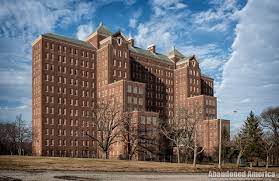






















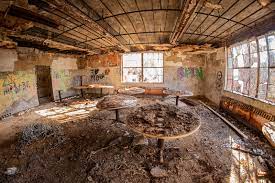
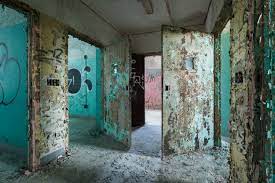
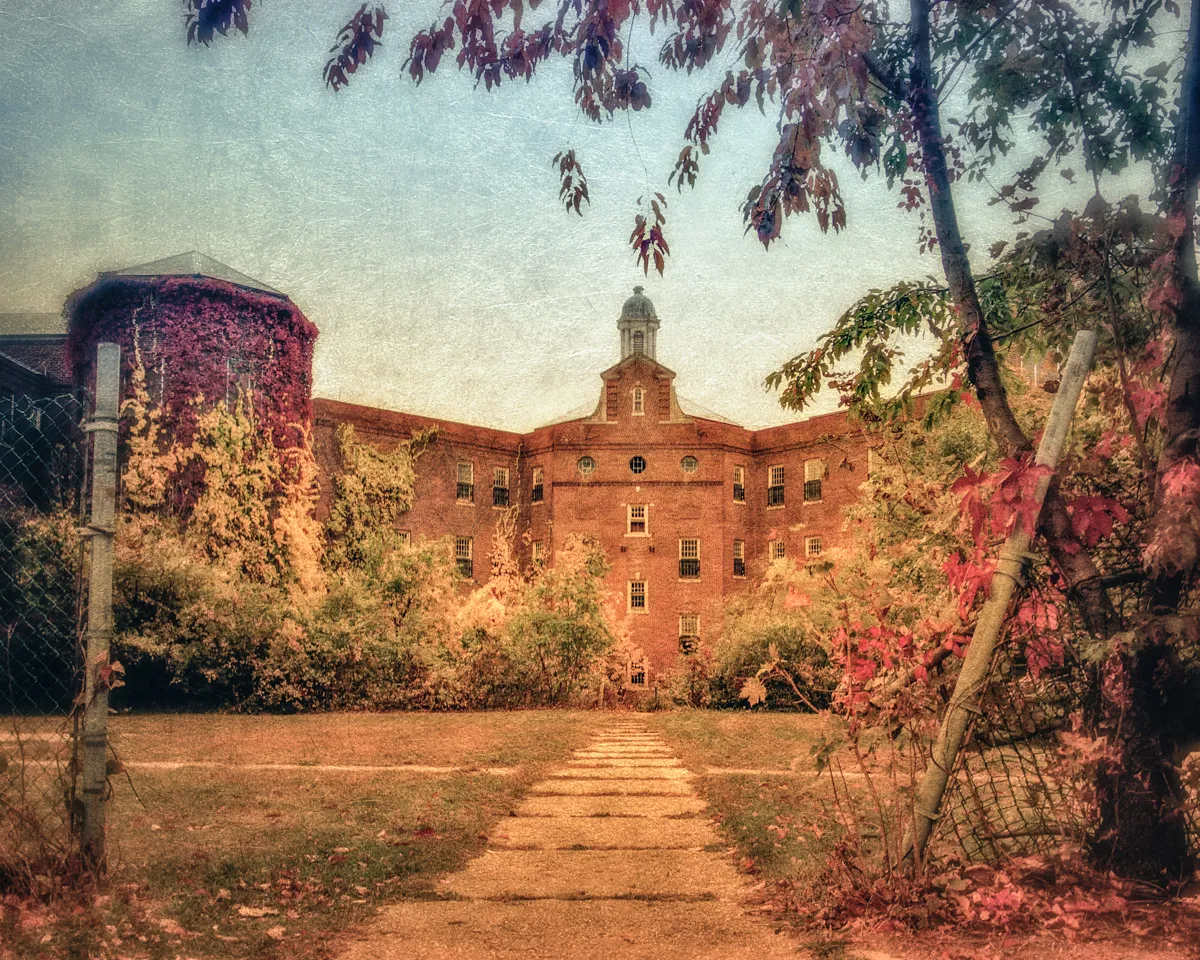

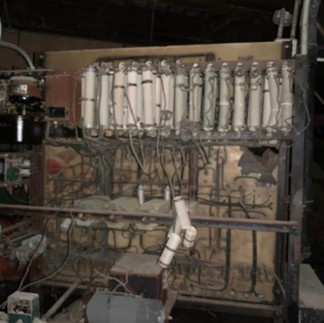
























Comentários